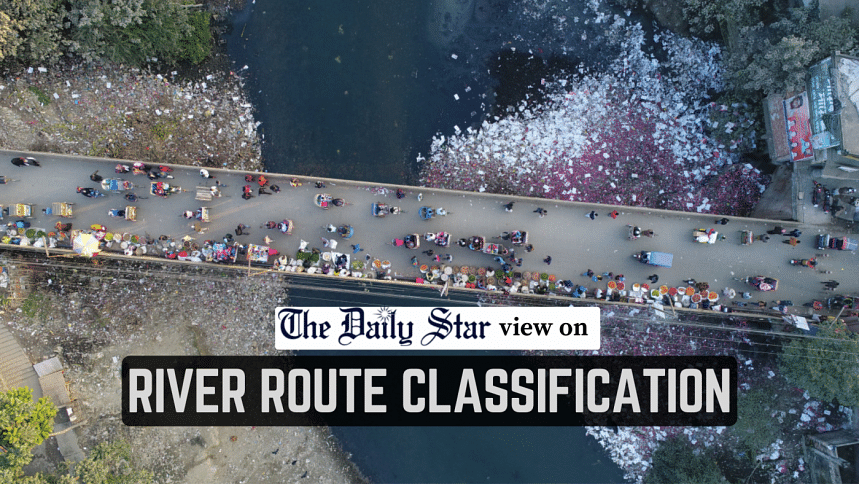Make protecting our rivers a top priority

We welcome the initiative taken by Bangladesh Inland Water Transport Authority (BIWTA) to bring 10,187 kilometres of non-classified river under classification to protect them from unplanned structures, such as bridges and culverts. It is also reviewing the already classified routes for reclassification. This initiative is supposed to ensure better navigability of our rivers and save many of them from extinction.
According to a report in this daily, the BIWTA is implementing a Tk 18.3-crore project, with assistance from the Institute of Water Modelling (IWM), to determine or review the standard high-water level (SHWL) and standard low-water level (SLWL) of 16,155 kilometres of river in total (Currently, 5,968 kilometres of river or 95 river routes are classified). Data from 442 water-level stations from four different agencies, including the BIWTA, accumulated over the last 25 years, has been analysed to figure out the SHWL and SLWL of these river routes. Based on the findings from this project, the BIWTA has prepared a list of 367 river routes that need to be classified or re-classified. The classification system will consider the least available depth, the importance of the waterway, the traffic intensity, and the level of dependency on the route.
On paper, this initiative seems rather promising. But given the rampant irregularities in river management that we have witnessed for years, we cannot help but feel sceptical about its success. Is the BIWTA properly equipped to withstand the exertion of power by the local political influentials—some of whom are closely connected with the government—from building structures over the rivers as they please? Then there are some government agencies who have also defied the BIWTA's authority in the past to build small bridges. And what about indiscriminate encroachment, which also disrupts natural water flow and kills navigability?
Only a couple of days ago, our state minister for shipping said almost one-third of our rivers had lost navigability. In order to bring them back to their former glory, this initiative could prove to be effective—if properly implemented and strictly adhered to. Saving our rivers must be a top priority for the government right now. This will need coordinated efforts from all agencies, and there can be no scope for anyone—even someone with political influence—to put their toe out of line. The government must also equip the BIWTA with the authority to hold anyone who defies its rules to account. We have no time to waste when it comes to our rivers.
Follow The Daily Star Opinion on Facebook for the latest opinions, commentaries and analyses by experts and professionals. To contribute your article or letter to The Daily Star Opinion, see our guidelines for submission.

 For all latest news, follow The Daily Star's Google News channel.
For all latest news, follow The Daily Star's Google News channel. 










Comments